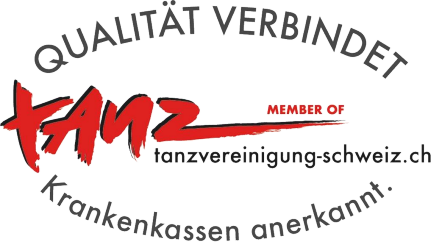Our Course and Education Concept
Our educational programme focuses on (social) ballroom dancing. Our guideline is the internationally recognised syllabus of the ISTD and IDTA for the English (ballroom) style. Our concept is also closely modelled on these standard works. Our concept includes the following programmes.
Beginner Courses 1–4: The structured introduction to ballroom dancing. In 4×6 lessons you will learn seven of the ten Standard and Latin dances, as well as Rhythm and Discofox and some basics of Merengue and Salsa. As this level is a fairly generic introduction, we rarely run this level.
Extension Courses 1–4: Building on the knowledge from the Beginner courses, we now move on to the (almost) complete newcomer syllabus in all ten Standard and Latin dances (approx. 70 figures in total); in addition, we also deepen our knowledge of Rhythm and Discofox. The content of the advanced courses can also be learnt as part of Ballroom Journey: Fundamentals.
Ballroom Journey: In different levels, which are still based on the ISTD syllabus, you will explore the fantastic world of ballroom dancing in increasing depth. The design of the lessons is strongly orientated towards the needs of the participants and also addresses different levels of progression within a level. In the following table you will find an overview of the different levels including some information on self-grading.
| Fundamentals | Essentials | Progression | Refinement | Elegance | |
| Syllabus | ISTD Newcomer | ISTD Bronze | ISTD Silver | ISTD Gold | Popular Variations; Advanced Figures |
| Prior Experience (approx.) | 24 lessons / ½ year | 48 lessons / 1 year | 100 lessons / 2 years | 150 lessons / 3 years | 200 lessons / 4 years |
| Prior Knowledge | First basic figures in the 7 dances English Waltz, (English) Tango, Viennese Waltz, Quickstep, Cha Cha Cha, Rumba and Jive. Knowledge of Rhythm (Foxtrot) and Discofox is also desirable. | Stable basic knowledge in all ten Standard and Latin dances, ideally including the complete newcomer syllabus according to ISTD. | Good skills in basic techniques and an extensive repertoire in Standard and Latin figures (ideally a complete bronze syllabus according to ISTD); confidence in leading and technique. | Very good skills in basic and advanced figures (complete silver syllabus according to ISTD). High level of technical competence, good musical sense as well as excellent balance and body control. | High level proficiency in technique and expression as well as experience in the ten Standard and Latin dances, including all figures of the complete ISTD syllabus. |
| Entry easily possible with ... ... German Dance Medal in ... German Dance Sport Medal in ... swissdance amateur medal test in |
Bronze / Silver Bronze / Silver Bronze / Silver |
Gold / Goldstar Gold / Brillant Gold / Platinum |
Super Goldstar Brillant Platinum |
Super Goldstar Rang II Brillant + Gold with wreath — |
— — — |
(Lateral) joiners are always welcome at all levels! You can easily find out the requirements for a ‘lateral entry’ with the help of ↗ dancecentral.info (section ‘International Style Ballroom’) and the table above.
Still not sure? No problem, our Head of Sport will be happy to help you: .
 English (UK)
English (UK)  Deutsch (CH)
Deutsch (CH) 